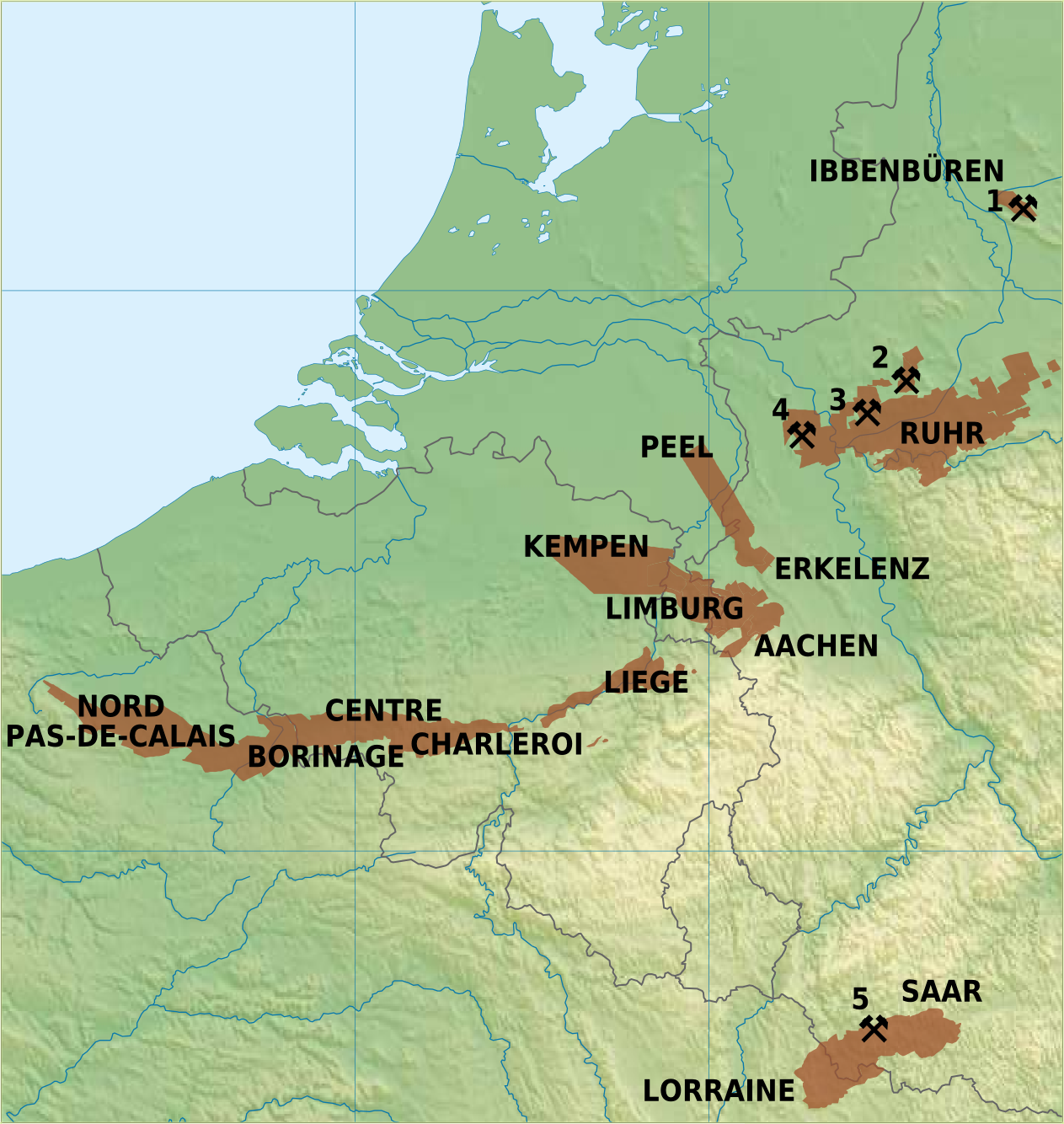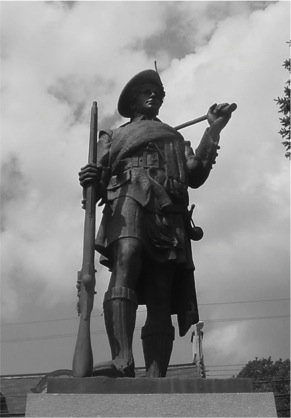|
Coalfield
A coalfield is an area of certain uniform characteristics where coal is mined. The criteria for determining the approximate boundary of a coalfield are geographical and cultural, in addition to geological. A coalfield often groups the seams of coal, railroad companies, cultural groups, and watersheds and other geographical considerations. At one time the coalfield designation was an important category in business and industrial discussions. The terminology declined into unimportance as the 20th century progressed, and was probably only referred to by a few small railroads and history buffs by the 1980s. Renewed interest in industrial heritage and coal mining history has brought the old names of the coalfields before a larger audience. Australia New South Wales *Gunnedah Basin coalfields *Hunter Valley coalfields *South Maitland coalfields *Sydney Basin coalfields Queensland *Bowen Basin coalfields *Galilee Basin coalfields *Surat Basin coalfields *Walloon coalfields Victoria ... [...More Info...] [...Related Items...] OR: [Wikipedia] [Google] [Baidu] |
South Maitland Coalfields
The South Maitland coalfields was the most extensive coalfield in New South Wales until the great coal mining slump of the 1960s. It was discovered by Lieutenant-Colonel William Paterson's party when they were engaged in an exploratory visit to the Hunter River Valley during July 1801. Mention has been made that coal was being mined in the area during the 1840s, and about 1850 an outcrop in the vicinity of Mount Vincent was reported to the authorities. Several years later, Mr. Bourn Russell also known as Captain Russell commenced operations in a small way at Stoney Creek, Homeville (New South Wales), near Farley. The potential wealth of the coalfields was brought forward in 1886 by Professor Tannatt William Edgeworth David who located an outcrop of first grade coal at Deep Creek, near the present township of Abermain. This gentleman was instrumental in having the whole coal-bearing area, estimated at 20,000 acres (81 km²), reserved for mining purposes. The coalfields were ... [...More Info...] [...Related Items...] OR: [Wikipedia] [Google] [Baidu] |
Coal
Coal is a combustible black or brownish-black sedimentary rock, formed as stratum, rock strata called coal seams. Coal is mostly carbon with variable amounts of other Chemical element, elements, chiefly hydrogen, sulfur, oxygen, and nitrogen. Coal is formed when dead plant matter decays into peat and is converted into coal by the heat and pressure of deep burial over millions of years. Vast deposits of coal originate in former wetlands called coal forests that covered much of the Earth's tropical land areas during the late Carboniferous (Pennsylvanian (geology), Pennsylvanian) and Permian times. Many significant coal deposits are younger than this and originate from the Mesozoic and Cenozoic eras. Coal is used primarily as a fuel. While coal has been known and used for thousands of years, its usage was limited until the Industrial Revolution. With the invention of the steam engine, coal consumption increased. In 2020, coal supplied about a quarter of the world's primary energ ... [...More Info...] [...Related Items...] OR: [Wikipedia] [Google] [Baidu] |
Hat Creek Coalfield
The Hat Creek is a large coal field located in the west of Canada in British Columbia. Hat Creek represents one of the largest coal reserve in Canada having estimated reserves of 10 billion tonnes of coal Coal is a combustible black or brownish-black sedimentary rock, formed as rock strata called coal seams. Coal is mostly carbon with variable amounts of other elements, chiefly hydrogen, sulfur, oxygen, and nitrogen. Coal is formed when dea .... References {{reflist Coal in Canada ... [...More Info...] [...Related Items...] OR: [Wikipedia] [Google] [Baidu] |
Willow Bunch Coalfield
Willows, also called sallows and osiers, from the genus ''Salix'', comprise around 400 speciesMabberley, D.J. 1997. The Plant Book, Cambridge University Press #2: Cambridge. of typically deciduous trees and shrubs, found primarily on moist soils in cold and temperate regions. Most species are known as willow, but some narrow-leaved shrub species are called osier, and some broader-leaved species are referred to as sallow (from Old English ''sealh'', related to the Latin word ''salix'', willow). Some willows (particularly arctic and alpine species) are low-growing or creeping shrubs; for example, the dwarf willow (''Salix herbacea'') rarely exceeds in height, though it spreads widely across the ground. Description Willows all have abundant watery bark sap, which is heavily charged with salicylic acid, soft, usually pliant, tough wood, slender branches, and large, fibrous, often stoloniferous roots. The roots are remarkable for their toughness, size, and tenacity to live ... [...More Info...] [...Related Items...] OR: [Wikipedia] [Google] [Baidu] |
Tulameen Coalfield
Tulameen, originally known as Otter Flat, is a small community in British Columbia, Canada, about 26 kilometres northwest of the town of Princeton on the Crowsnest Highway (Hwy 3), and about 185 kilometres northeast from the city of Vancouver, British Columbia. Located at the south end of Otter Lake and just north of the Tulameen River, it is on the lee side of the Canadian Cascades mountain range and enjoys a slightly semi-arid climate, sheltered from the heavy rains west of that range. Early history The locality was known in fur trade times as Campement des Femmes (Woman's Camp, known as ''Tseistn'' in the native language) which was located in present day Tulameen, was native encampment of women while the men went hunting. In the decades of exploration of the remote areas of the province following the creation of the Colony of British Columbia in 1858 and the flurry of exploration of back-country engendered by the nearby Fraser Canyon Gold Rush, prospecting activity led to the ... [...More Info...] [...Related Items...] OR: [Wikipedia] [Google] [Baidu] |
Taber Coalfield
Taber may refer to: Places * Taber, Alberta, town in Canada *Municipal District of Taber The Municipal District of Taber is a municipal district (MD) in southern Alberta, Canada. It is located in Census Division 2. Geography Communities and localities The following urban municipalities are surrounded by the MD of Taber. ;C ..., a municipal district in Alberta, Canada * Taber Airport, near the town in Alberta, Canada * Fort Taber, Civil War-era fort and park in Massachusetts, USA Other * Taber (surname), including a list of people with the name * Taber's, a medical dictionary * Taber MacCallum (born 1964), American space scientist See also * Cardston-Taber-Warner, a provincial electoral district in Alberta, Canada * Tabor (other) {{disambiguation, geo ... [...More Info...] [...Related Items...] OR: [Wikipedia] [Google] [Baidu] |
Sydney Coalfield
Sydney ( ) is the capital city of the state of New South Wales, and the most populous city in both Australia and Oceania. Located on Australia's east coast, the metropolis surrounds Sydney Harbour and extends about towards the Blue Mountains to the west, Hawkesbury to the north, the Royal National Park to the south and Macarthur to the south-west. Sydney is made up of 658 suburbs, spread across 33 local government areas. Residents of the city are known as "Sydneysiders". The 2021 census recorded the population of Greater Sydney as 5,231,150, meaning the city is home to approximately 66% of the state's population. Estimated resident population, 30 June 2017. Nicknames of the city include the 'Emerald City' and the 'Harbour City'. Aboriginal Australians have inhabited the Greater Sydney region for at least 30,000 years, and Aboriginal engravings and cultural sites are common throughout Greater Sydney. The traditional custodians of the land on which modern Sydney stands are ... [...More Info...] [...Related Items...] OR: [Wikipedia] [Google] [Baidu] |
Spring Hill Coalfield
Spring(s) may refer to: Common uses * Spring (season), a season of the year * Spring (device), a mechanical device that stores energy * Spring (hydrology), a natural source of water * Spring (mathematics), a geometric surface in the shape of a helically coiled tube * Spring (political terminology), often used to name periods of political liberalization * Springs (tide), in oceanography, the maximum tide, occurs twice a month during the full and new moon Places * Spring (Milz), a river in Thuringia, Germany * Spring, Alabel, a barangay unit in Alabel, Sarangani Province, Philippines * Șpring, a commune in Alba County, Romania * Șpring (river), a river in Alba County, Romania * Springs, Gauteng, South Africa * Springs, the location of Dubai British School, Dubai United States * Springs, New York, a part of East Hampton, New York * Springs, Pennsylvania, an unincorporated community * Spring, Texas, a census-designated place * Spring District, neighborhood in Bellevue, Washin ... [...More Info...] [...Related Items...] OR: [Wikipedia] [Google] [Baidu] |
St Rose-Chimney Corner Coalfield
ST, St, or St. may refer to: Arts and entertainment * Stanza, in poetry * Suicidal Tendencies Suicidal Tendencies is an American crossover thrash band formed in 1980 in Venice, Los Angeles, Venice in Los Angeles, California by vocalist Mike Muir. Muir is the only remaining original member of the band. Along with Dirty Rotten Imbeciles, ..., an American heavy metal/hardcore punk band * Star Trek, a science-fiction media franchise * Summa Theologica, a compendium of Catholic philosophy and theology by St. Thomas Aquinas * St or St., abbreviation of "State", especially in the name of a college or university Businesses and organizations Transportation * Germania (airline) (IATA airline designator ST) * Maharashtra State Road Transport Corporation, abbreviated as State Transport * Sound Transit, Central Puget Sound Regional Transit Authority, Washington state, US * Springfield Terminal Railway (Vermont) (railroad reporting mark ST) * Suffolk County Transit, or Suffolk Tran ... [...More Info...] [...Related Items...] OR: [Wikipedia] [Google] [Baidu] |
Princeton Coalfield
Princeton University is a private research university in Princeton, New Jersey. Founded in 1746 in Elizabeth as the College of New Jersey, Princeton is the fourth-oldest institution of higher education in the United States and one of the nine colonial colleges chartered before the American Revolution. It is one of the highest-ranked universities in the world. The institution moved to Newark in 1747, and then to the current site nine years later. It officially became a university in 1896 and was subsequently renamed Princeton University. It is a member of the Ivy League. The university is governed by the Trustees of Princeton University and has an endowment of $37.7 billion, the largest endowment per student in the United States. Princeton provides undergraduate and graduate instruction in the humanities, social sciences, natural sciences, and engineering to approximately 8,500 students on its main campus. It offers postgraduate degrees through the Princeton School of P ... [...More Info...] [...Related Items...] OR: [Wikipedia] [Google] [Baidu] |
Pictou Coalfield
Pictou ( ; Canadian Gaelic: ''Baile Phiogto'') is a town in Pictou County, in the Canadian province of Nova Scotia. Located on the north shore of Pictou Harbour, the town is approximately 10 km (6 miles) north of the larger town of New Glasgow. Once an active shipping port and the shire town of the county, today Pictou is primarily a local service centre for surrounding rural communities and the primary tourist destination in this region of Nova Scotia. The name Pictou derives from the Mi'kmaq name , meaning "explosive place", a reference to the river of pitch that was found in the area, or perhaps from methane bubbling up from coal seams below the harbour. History Pictou Town had been the location of an annual Mi'kmaq summer coastal community prior to European settlement. Pictou was part of the Epekwitk aq Piktuk Mi'kmaq District, which included present-day Prince Edward Island and Pictou. Pictou Town was a receiving point for many Scottish immigrants moving to a new ho ... [...More Info...] [...Related Items...] OR: [Wikipedia] [Google] [Baidu] |




